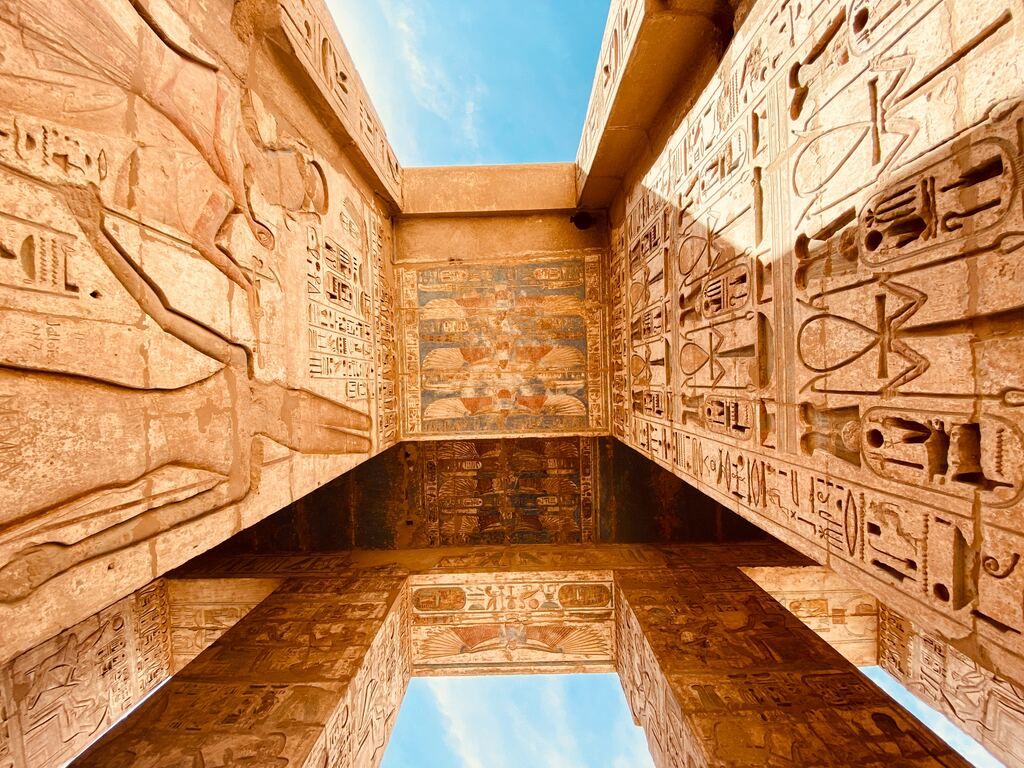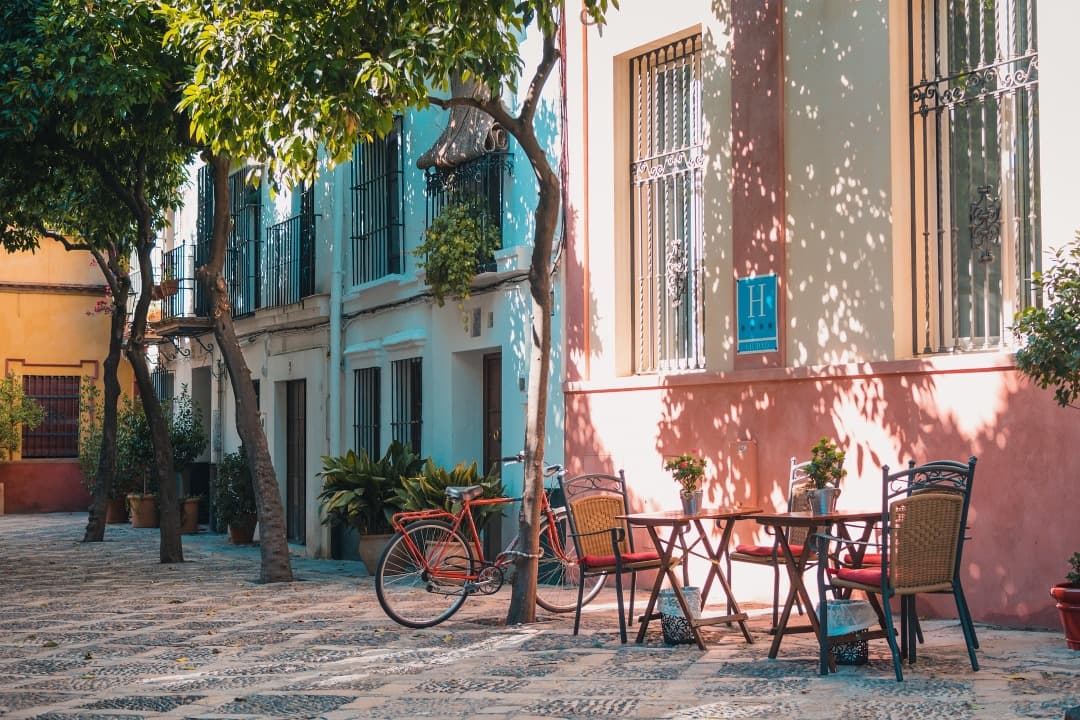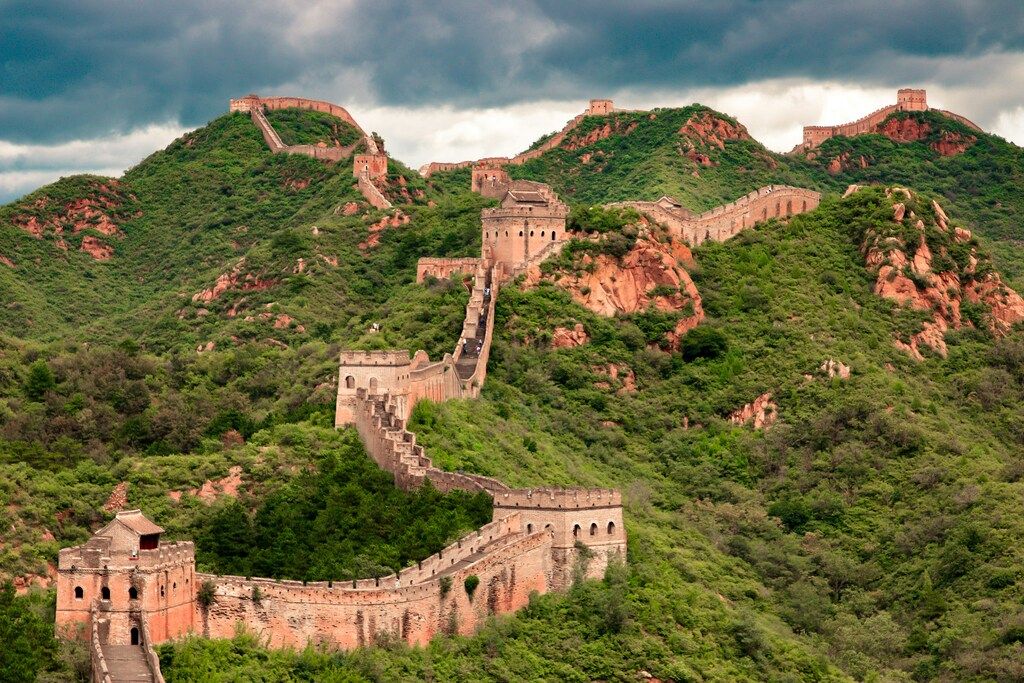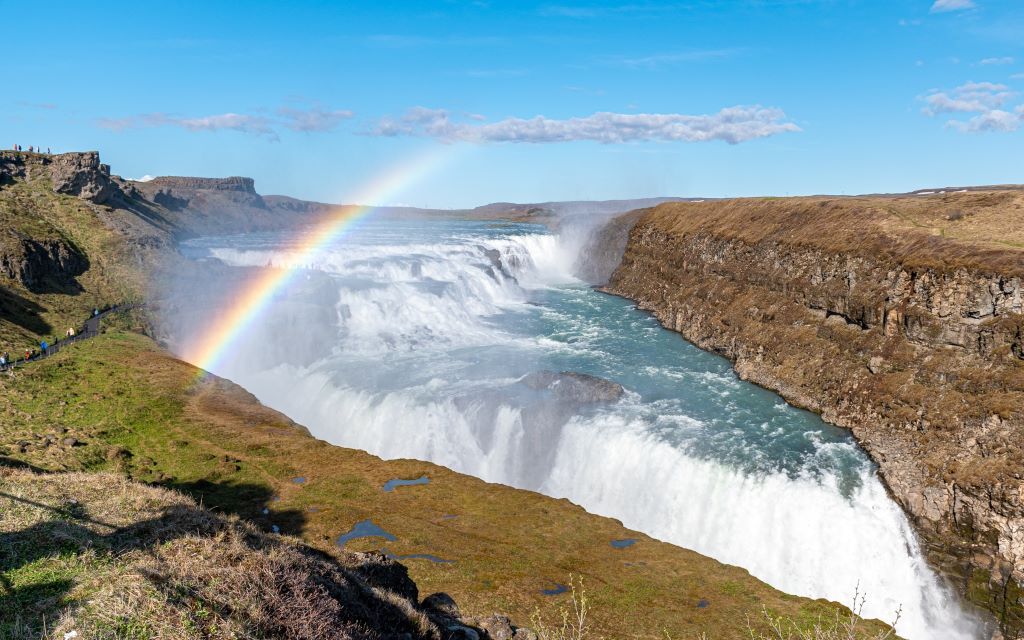

Ask anyone what makes Iceland a bucket-list destination, and they’re sure to say waterfalls.
The place is practically teeming with them; more than 10,000 waterfalls grace this glacier-laden island, a product of ever-shifting ice and extreme landscapes.
Some are gentle, babbling brooks creeping over blankets of moss and stirred by shy breezes. Others are thunderous beasts that make the ground tremble as they bear the brunt of thousands of gallons of bone-chilling glacial spray. A few are buried along gravel tracks, while others rage beside the famed Ring Road. The good news is that most are 100% free to access. No ticket booths, no turnstiles…just you, the spray, and maybe a stubborn sheep or two blocking your path.
It’s this accessibility, along with the island’s beauty, that earned Iceland the nickname, “the land of waterfalls”. And in this guide, we’ll list the most celebrated cascades as well as the lesser-known ones, to create a route you’ll print and tuck away in your travel journal, or save for later when you’re about to step into the land of ice and fire.
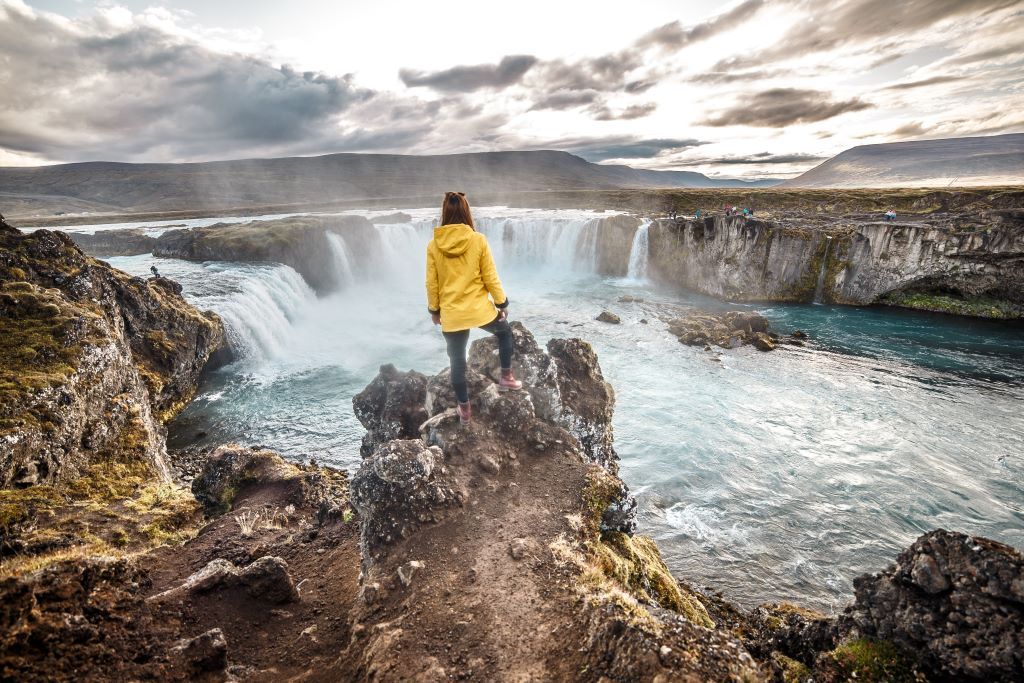
The must-sees: iconic falls along the Golden Circle and South Coast
Gullfoss: The Golden Waterfall
Gullfoss is not one for half measures. It tumbles in two mighty cascades, plummeting into a rocky gorge with a noise so thunderous it’s hard to chat. On clear days, the spray catches the light, and rainbows glow in the air like confetti.
This waterfall was almost lost forever to the ranks of “once were waterfalls” when a power company set its sights on it. But a spunky local saved the day, and left us with Iceland’s most famous natural attraction. The “Golden Falls” moniker? Not just for the mist, but the golden cascade of sunlight that Icelanders believe falls on their precious unspoiled countryside.
Get right up to the edge (and hang on to your hat) and you’ll get why this waterfall is the final frontier for anyone doing the Golden Circle trail. There are barely any places on earth that are more Icelandic than this. So, if you were thinking about sticking it on your ‘must-see’ list, the answer is obvious.
But the reason it is so cool to see is that it’s so completely different depending on when you visit. In summer, the falls crash down at full volume while the upper terrace casts up rainbows. In winter, frigid water churns into ice where you’d expect a splash, and shimmering rainbows dance in the mist. A few platforms jutting out from the sides offer you the chance to see it head-on or from completely above. Whether you visit it in the quiet dark of midwinter’s night or under the summertime Midnight Sun, Gullfoss is the only show you can count on for constant Icelandic wonder.
Seljalandsfoss: the waterfall you can walk behind
Seljalandsfoss is less about brute force and more about spectacle. The cascade plunges 60 meters, thin and elegant, framed by cliffs. But here’s the kicker: you can walk behind it. Yes, behind the curtain of water itself.
It’s the kind of experience that feels cinematic. Sunset light pouring through the spray turns the whole scene golden, and every photo looks like a movie still. Shoes will get wet, your hair will frizz, and you’ll grin anyway.
So, is Seljalandsfoss worth visiting? Absolutely. Few waterfalls anywhere on Earth deliver this kind of intimacy. Just bring a rain jacket unless you enjoy damp souvenirs. If you’re considering waterfall tours, this one always makes the cut.
Practical note: the path behind the falls can be slippery, especially in winter, when ice creeps across the rocks. Good boots make the difference between adventure and embarrassment. Visit in summer for safe footing and glowing sunsets, but winter adds its own magic with frozen drapery of ice. And while you’re here, don’t miss Gljúfrabúi, a hidden waterfall tucked inside a nearby canyon. It requires squeezing through a narrow opening, but the payoff, a secret cascade roaring in a mossy chamber, feels like stumbling onto nature’s private stage.
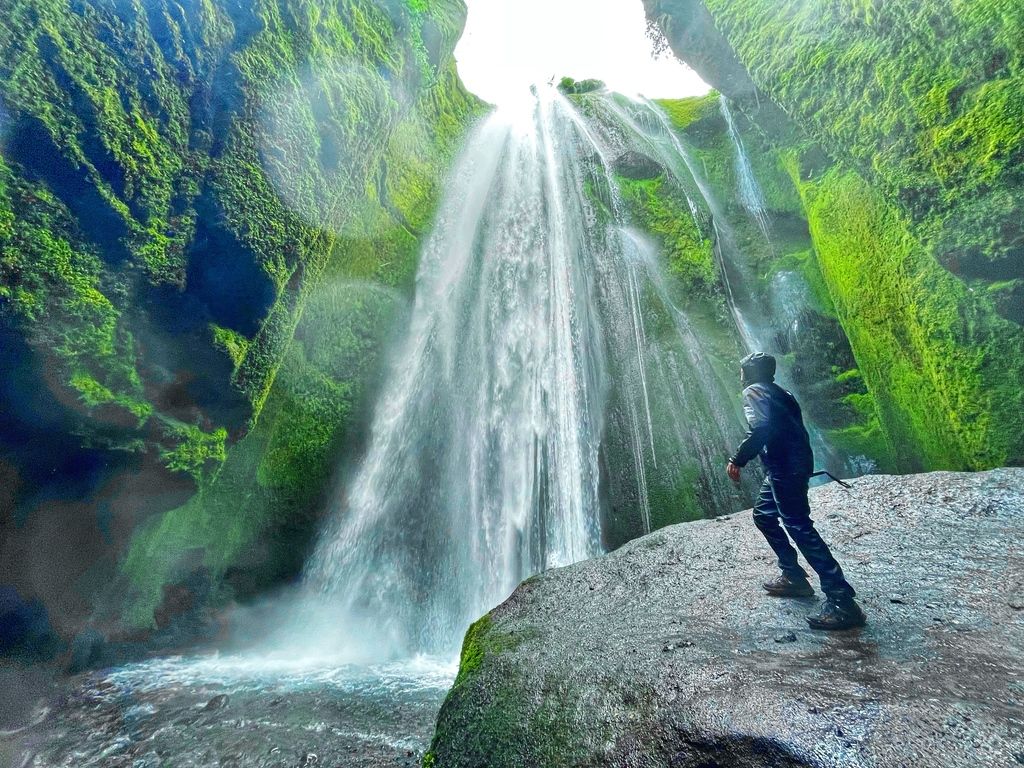
Skógafoss: the thundering giant
If Gullfoss dazzles and Seljalandsfoss enchants, Skógafoss overwhelms. A sheer drop of 60 meters with a width of 25, it crashes down like a drumbeat. The mist rises in permanent clouds, and rainbows appear almost daily.
A staircase to the right lets you climb for a bird’s-eye view, though your calves may protest halfway up. From above, the Skógá River unspools like a ribbon across the countryside. Legends whisper that a chest of gold lies hidden behind the falls, though no one has yet succeeded in fishing it out.
It’s one of the great waterfalls in South Iceland, accessible right off the Ring Road, and impossible to ignore. Go early morning or late evening if you want the falls (almost) to yourself. Otherwise, expect crowds, and a damp camera lens.
The folklore deserves more than a passing mention. The story says the chest belonged to a Viking settler, Prasi, who buried it behind the waterfall. Locals later claimed to glimpse the chest’s ring through the water, but it snapped off when they tried to pull it free. The ring now sits in Skógar Museum, leaving the rest of the treasure tantalizingly out of reach. Beyond myths, the area rewards explorers: hike along the Skógá River above the falls, and you’ll discover more than 20 smaller cascades tumbling through verdant valleys. For photographers, Skógafoss is a dream—misty rainbows, epic scale, and endless angles, especially when storms pass and light breaks suddenly across the spray.
Insider Tip: these iconic spots are crowd-pleasers for a reason. Visit at dawn or near dusk for fewer people and softer light. Iceland never really sleeps in summer, so neither should your camera.
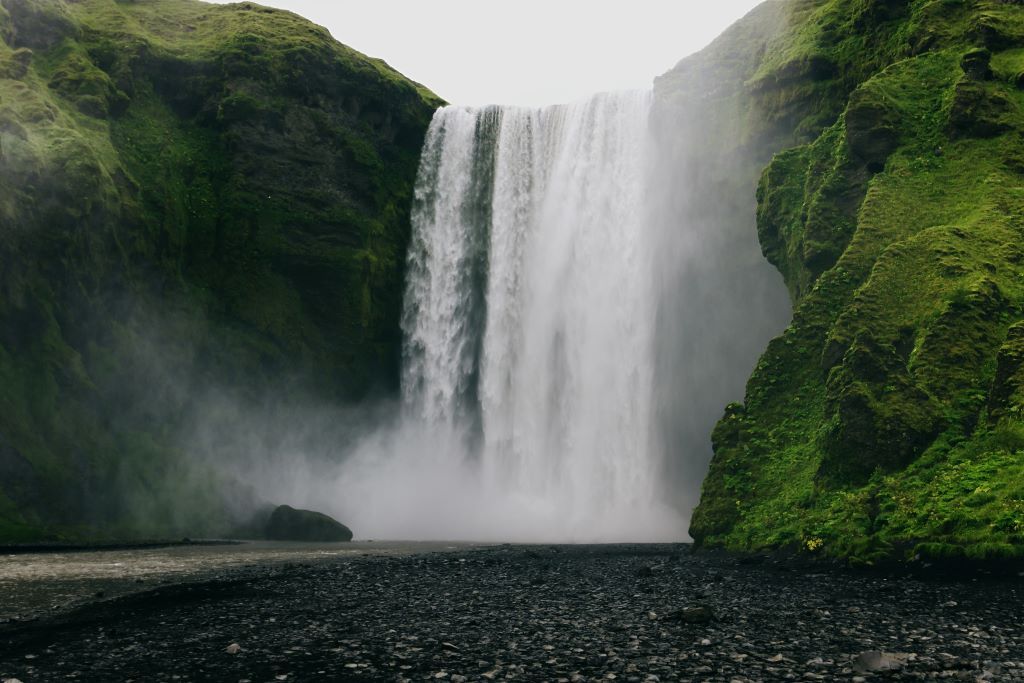
The powerful Northern and Eastern giants
Dettifoss: Europe’s most powerful waterfall
Dettifoss is less a waterfall and more a force of nature. Located in the north, it hurls 193 cubic meters of water per second into a canyon. The roar is so loud you feel it in your chest, and the spray can drench you even from afar.
Fans of sci-fi may recognize it from Ridley Scott’s Prometheus, where it provided an alien backdrop. But no film can match the visceral reality of standing near its edge. Imagine thunder that never stops. That’s Dettifoss.
Reaching it involves some driving, but the payoff is unforgettable. Just remember: the path is rocky, and weather in this region is famously fickle. Bring layers. Lots of layers.
A unique quirk here is choosing your viewpoint. The east bank offers closer, more dramatic access, though the road can be rough and less maintained. The west bank, by contrast, is easier to reach with paved paths and better infrastructure, but the view feels more distant. Both sides deliver their own brand of awe, so ambitious travelers try both. The surrounding Jökulsárgljúfur canyon, carved by ancient floods, adds scale that humbles even Dettifoss itself. This is nature at full volume.
Goðafoss: the waterfall of the Gods
Where Dettifoss shouts, Goðafoss sings. Its horseshoe-shaped cascade stretches across 30 meters, its turquoise waters falling 12 meters in a graceful curtain. History makes it even more compelling: legend tells that in the year 1000, a chieftain threw his pagan idols into the falls to mark Iceland’s conversion to Christianity.
Today, Goðafoss feels almost serene compared to its thunderous cousin. The viewing platforms are easy to reach, and the falls look equally beautiful in summer’s midnight sun or under winter’s aurora. It’s no wonder this one is rightly counted among the country’s most iconic falls.
What elevates Goðafoss beyond scenery is how much it still resonates with Icelandic identity. Schoolchildren learn about its role in history. Local guides retell the story of the idols with a mixture of pride and drama. Standing there, with the river’s turquoise ribbon unraveling before you, you sense how natural landmarks here double as cultural anchors. It’s not just water falling, it’s history, myth, and memory layered into one place.
Planning to chase these northern giants? Pack smart. The region is remote, and the weather changes faster than you can zip your jacket. Check the ultimate Iceland packing list before heading out. Trust us, you’ll thank yourself when sideways rain meets volcanic gravel.
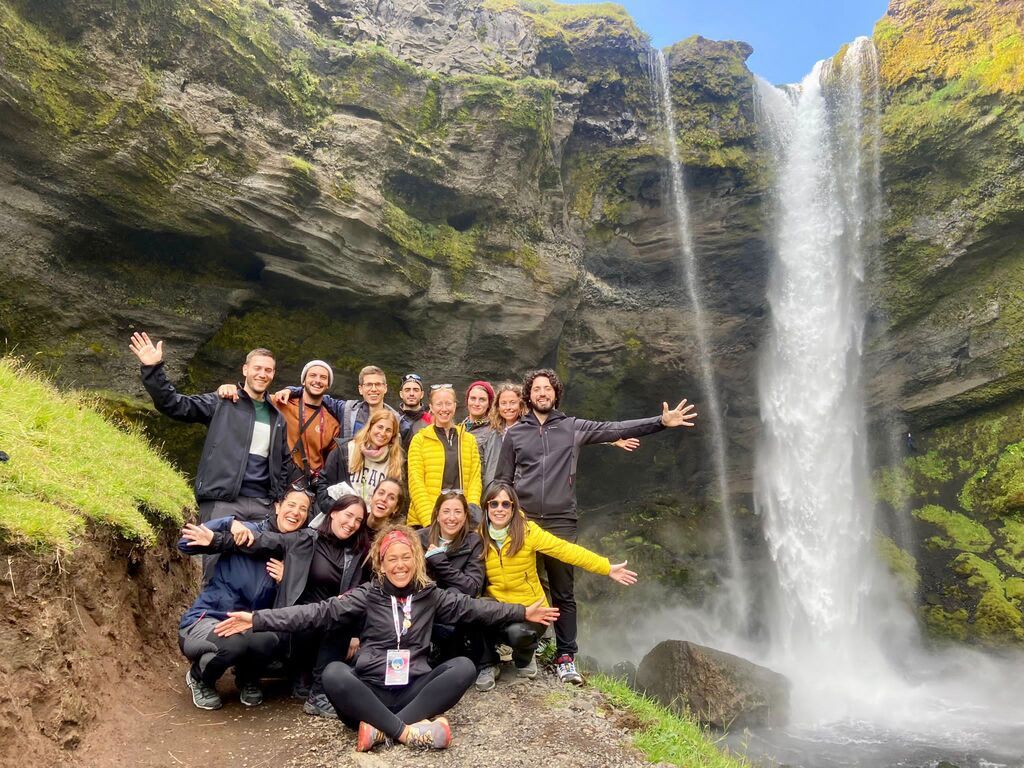
Hidden gems and lesser-known cascades
Hraunfossar & Barnafoss: the lava waterfalls
Not every waterfall comes with a thunderous crash. Hraunfossar is subtle magic. Instead of one stream, dozens of rivulets seep directly out of a lava field, spilling like silver threads into the Hvítá River. The effect is mesmerizing, as if the earth itself had sprung a leak.
Nearby lies Barnafoss, or “Children’s Falls.” The name comes from a sad tale of two children who drowned after trying to cross a natural stone bridge, which later collapsed. The story lingers, adding a ghostly weight to an otherwise scenic spot.
Both falls are easily accessible and far less crowded than their southern counterparts. They’re perfect for travelers seeking landscapes that feel intimate rather than grandiose. Together, they prove Iceland’s waterfalls aren’t just about size, they’re also about stories.
If Hraunfossar is elegance, Barnafoss is energy. Its water funnels through narrow gorges, foaming and twisting with urgency. Add the haunting legend, and you have a place that feels alive with both beauty and melancholy. Visit in autumn, when the lava fields are brushed with gold and crimson mosses, and the rivers glow under softer light.
Dynjandi: the jewel of the Westfjords
Dynjandi doesn’t just fall; it cascades in stages, like a bridal veil spread across the cliff face. Standing 100 meters tall and widening as it descends, it’s often called Fjallfoss, or “Mountain Falls.”
Getting there isn’t simple. Dynjandi sits deep in the Westfjords, a region more remote than most travelers dare to explore. But that’s its charm. With fewer crowds, you can stand in awe without distraction. The hike up passes smaller waterfalls, each beautiful enough to warrant its own postcard.
For adventurous souls, Dynjandi is a crown jewel. While many of the country’s best-known waterfalls are right on the Ring Road, Dynjandi is a detour that’s truly worth taking, proof that the best treasures sometimes require effort.
The approach itself sets the mood: gravel roads twisting through fjords, with cliffs plunging into icy seas. Travel here demands patience, good tires, and an appetite for detours. But once you round the bend and see Dynjandi’s shimmering veil spread across black rock, the journey feels more like a pilgrimage than a drive. The Westfjords’ remoteness is its gift—solitude, silence, and the sense of standing in a cathedral built by nature alone.
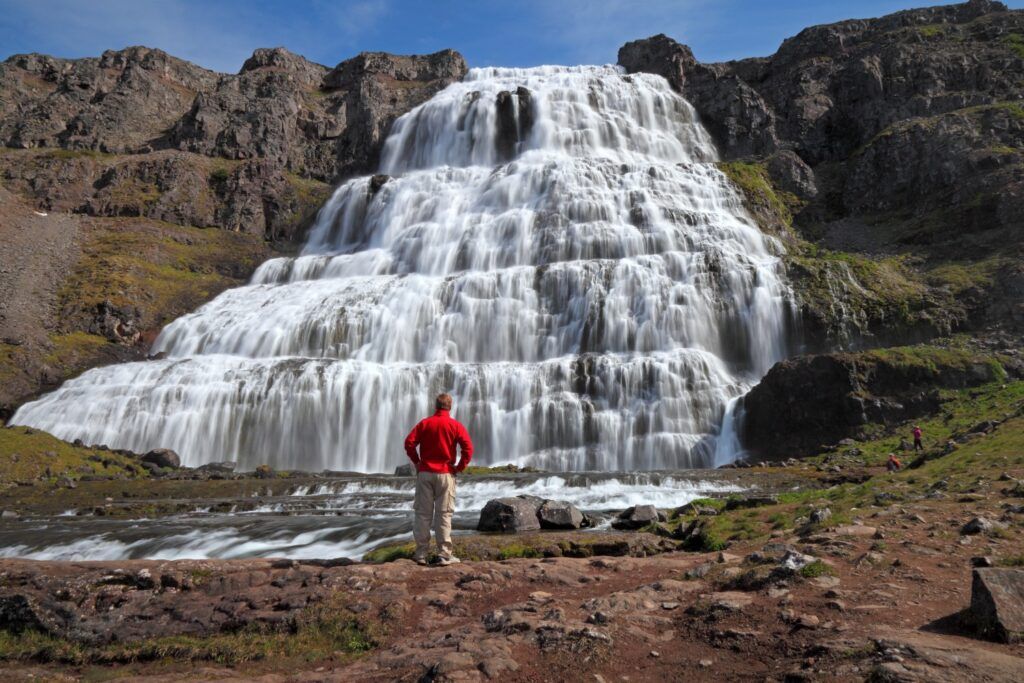
Waterfall chasing tips for your Iceland adventure
So, you’ve pinned a dozen waterfalls to your map and packed your waterproofs, now what? Chasing cascades in Iceland is equal parts planning and surrendering to the elements. Timing is everything. In summer, long daylight hours let you linger at waterfalls without watching the clock, while winter offers frozen curtains of ice and far fewer crowds. Autumn and spring sit somewhere in between, combining moody skies with easy road access. If you’re wondering when to go, the best time to visit Iceland depends on whether you prefer midnight sun or frosty solitude.
Once you’re there, remember that waterfalls look friendliest from a distance; get too close and you’ll discover how slippery rocks can be. Iceland’s safety ropes and signs aren’t decoration; they’re there because someone once thought, “That looks safe,” and it wasn’t. Respect nature, step carefully, and keep your lens cloth handy because spray is part of the deal.
The good news? Almost every fall is free to visit. The slightly less good news? Parking often isn’t. Bring a few coins or a card, especially at the big names along the Ring Road. And while we’re on costs, budget for the road trip itself: fuel, snacks from gas stations, and the occasional hot chocolate to thaw out cold fingers. Practical, yes, but still part of the magic.
Beyond the falls: more of Iceland’s wild heart
Waterfalls might be Iceland’s showstoppers, but they’re not the only act. Once you’ve stared down Dettifoss or ducked behind Seljalandsfoss, it’s hard not to notice the steaming geysers, lava fields, and glaciers waiting just around the bend. It’s all one ecosystem—water rushing off ice caps, sinking into volcanic rock, and reappearing as crashing torrents or bubbling hot springs.
The best way to see it? Think beyond single stops and embrace the bigger picture. Waterfalls are your entry ticket to landscapes where nature feels both alive and a little mischievous. To keep that sense of wonder flowing, check out the best things to see in Iceland, geysers, glaciers, and all the wild variety that ties the country together.
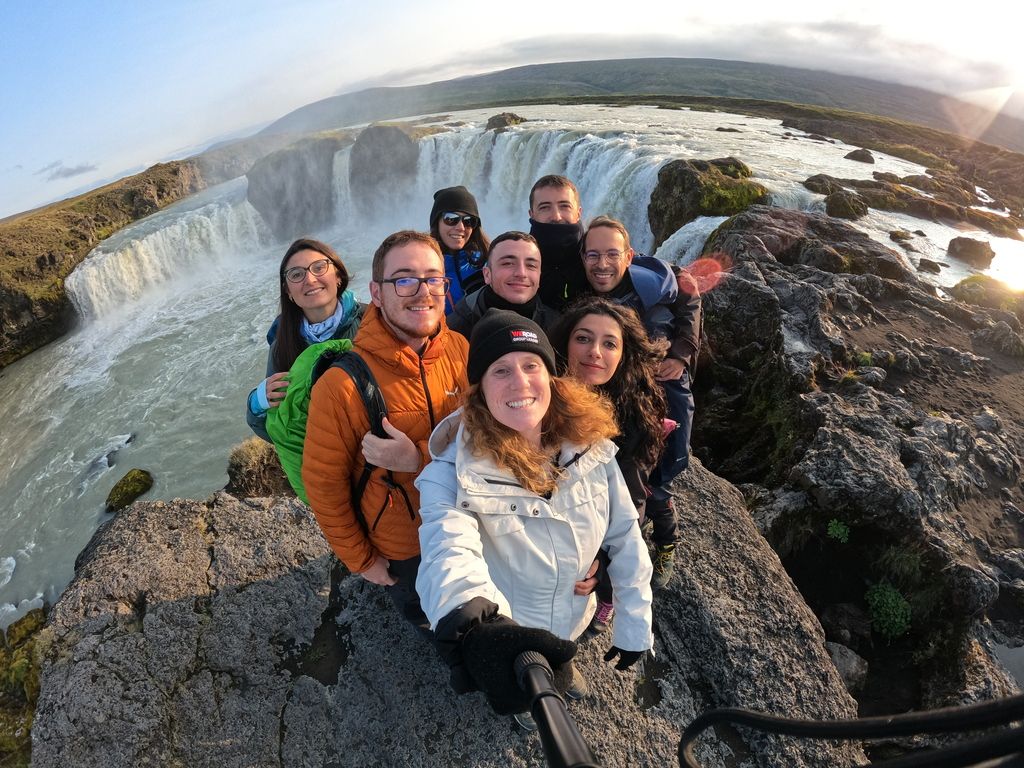
Ready to chase cascades with us?
At some point, the spreadsheets, the packing lists, and the endless Googling stop being fun. That’s where we come in. If the thought of driving gravel roads in a snowstorm makes your heart race (and not in a good way), join an organised group expedition to Iceland. You’ll still see the waterfalls, but without having to wrestle with road closures or wonder which trailhead leads where.
Prefer to mix and match? Browse group travel itineraries for Iceland and pick the pace that fits you. Either way, the adventure is waiting—mist in your hair, boots on wet ground, and a cascade roaring just a few steps ahead.

